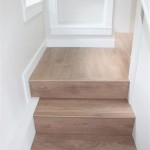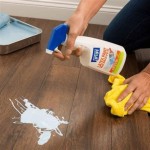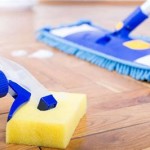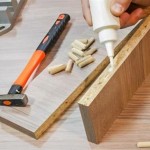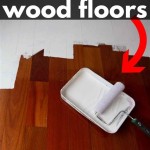How to Remove Carpet Tile Adhesive From a Wood Floor
Removing carpet tile adhesive from a wood floor is a common, albeit often challenging, task faced by homeowners and contractors alike. The process requires patience, the right tools, and a systematic approach to avoid damaging the delicate wood surface beneath. This article details several effective methods for removing carpet tile adhesive, emphasizing safety and the preservation of the wood flooring's integrity.
Before starting any adhesive removal project, it is crucial to identify the type of adhesive used. Different adhesives respond differently to various removal techniques. Older adhesives may be brittle and easier to scrape off, while newer, more robust adhesives may require heat or chemical solvents for effective removal. Examining leftover pieces of carpet tile and adhesive can provide clues as to the adhesive's composition. If possible, consult with the original carpet installer, if known, to determine the specific adhesive used.
Safety precautions are paramount. Always wear appropriate personal protective equipment (PPE), including safety glasses, gloves, and a dust mask or respirator. Adequate ventilation is also critical, especially when using chemical solvents. Open windows and doors to allow for fresh air circulation. If the odor of the solvent is strong, consider using a fan to further improve ventilation. If working in a confined space, a respirator with organic vapor cartridges is strongly recommended.
Preparing the work area is another essential step. Cover any adjacent surfaces that are not being worked on with drop cloths or plastic sheeting to protect them from accidental damage or solvent exposure. This includes walls, baseboards, and any furniture that cannot be easily moved out of the room. Secure the protective coverings with painter's tape to prevent them from shifting during the removal process.
Key Point 1: Mechanical Removal Techniques
The first approach to consider is mechanical removal. This involves using tools to physically scrape or chip away the adhesive. This method is often the least invasive and minimizes the risk of damage to the wood floor, provided it is executed carefully.
A plastic scraper is the primary tool for this method. Choose a scraper with a sharp, firm edge. Metal scrapers can easily scratch the wood, so they should be avoided unless working with an extremely stubborn adhesive and even then, used with extreme caution. Applying gentle pressure and working at a low angle will help prevent gouging or scratching the wood surface. Start by testing the scraper in an inconspicuous area to assess its effectiveness and to ensure it does not damage the wood.
For larger areas, a floor scraper with a long handle can be beneficial. These scrapers provide better leverage and reduce the strain on your back. Ensure the blade is sharp and made of plastic or a non-marring material. Work in small sections, overlapping each pass slightly, to ensure complete adhesive removal. Periodically check the blade for wear and tear, and replace it as needed.
A heat gun or hair dryer can be used to soften the adhesive before scraping. Apply heat to a small area for a short period of time, being careful not to overheat the wood. The goal is to soften the adhesive enough to make it easier to scrape without damaging the wood or igniting fumes from any chemicals in the adhesive. After heating, immediately scrape the softened adhesive away. Repeat this process section by section.
For adhesives that are particularly difficult to remove, consider using an oscillating multi-tool with a scraper attachment. These tools can provide more aggressive scraping action while still allowing for precise control. Use a plastic or non-marring scraper blade and experiment with different speeds to find the optimal setting for the specific adhesive. Always keep the tool moving to avoid concentrating the heat or pressure in one spot.
After scraping, there will likely be residual adhesive remaining on the floor. This can be removed using a combination of the techniques described below.
Key Point 2: Solvent-Based Removal Methods
When mechanical removal proves insufficient, solvent-based methods can be employed to dissolve the adhesive. However, solvents should be used with caution, as they can potentially damage the wood floor's finish or even the wood itself. Always test the solvent in an inconspicuous area before applying it to a larger area.
Several types of solvents are commonly used for adhesive removal. Mineral spirits is a relatively mild solvent that can be effective on some adhesives. It is less likely to damage wood finishes than stronger solvents, but it may require multiple applications and longer dwell times. Apply mineral spirits to a small area, let it sit for the recommended time (as indicated on the product label), and then scrape away the softened adhesive.
Acetone is a stronger solvent that can be effective on more stubborn adhesives. However, acetone is also more likely to damage wood finishes or dissolve certain types of flooring materials. Use acetone sparingly and only after testing it in an inconspicuous area. Apply acetone to a small area, let it sit for a short period of time (typically just a few minutes), and then scrape away the softened adhesive. Work quickly to minimize the risk of damage to the floor.
Adhesive removers specifically designed for carpet tile adhesive are also available. These products are formulated to dissolve the adhesive without damaging the underlying surface. Follow the manufacturer's instructions carefully, paying attention to dwell times and safety precautions. Always test the product in an inconspicuous area before applying it to a larger area.
Regardless of the solvent used, proper ventilation is essential. Open windows and doors to allow for fresh air circulation, and wear appropriate PPE, including gloves and a respirator. Avoid prolonged exposure to solvent vapors.
After using a solvent, it is important to thoroughly clean the floor to remove any residue. Use a clean cloth dampened with water and a mild detergent. Rinse the floor with clean water and dry it thoroughly.
Key Point 3: Steam and Heat Application
Another method to consider involves using steam or heat to soften the adhesive. This method can be particularly effective for certain types of carpet tile adhesives, and it is generally less harsh than using chemical solvents.
A steam cleaner can be used to apply steam directly to the adhesive. The steam will help to soften the adhesive, making it easier to scrape away. Use a steam cleaner with a narrow nozzle to focus the steam on the adhesive. Work in small sections, applying steam for a short period of time and then immediately scraping away the softened adhesive. Be careful not to overheat the wood floor, as this can cause warping or other damage.
Alternatively, a heat gun can be used to apply heat to the adhesive. This method is similar to using a heat gun before mechanical scraping, but it can be more effective for softening larger areas of adhesive. Apply heat to a small area for a short period of time, being careful not to overheat the wood. The goal is to soften the adhesive enough to make it easier to scrape without damaging the wood. After heating, immediately scrape the softened adhesive away. Repeat this process section by section.
When using steam or heat, it is important to monitor the wood floor closely for any signs of damage. If the wood starts to warp or discolor, stop using steam or heat immediately. Allow the floor to cool completely before proceeding with any further removal efforts.
After using steam or heat, it is important to dry the floor thoroughly. Use a clean, dry cloth to wipe up any excess moisture. Consider using a dehumidifier to help remove any lingering moisture from the air.
Once the adhesive is removed, the wood floor may require refinishing. This will depend on the condition of the existing finish and the extent of the adhesive removal process. If the finish is damaged or worn, refinishing will help to restore the floor to its original beauty. Consult with a professional flooring contractor for advice on the best refinishing options for your wood floor.
In conclusion, removing carpet tile adhesive from a wood floor requires a methodical approach, careful execution, and the appropriate tools and techniques. By understanding the different removal methods and prioritizing safety, it is possible to successfully remove the adhesive without causing significant damage to the wood floor. Should the task prove too difficult or if you are concerned about damaging the floor, consider consulting with a professional flooring contractor.

Removing Glue Or Adhesive From Hardwood Floors The Speckled Goat

Flooring How Can I Remove Carpet Adhesive From Hardwood Floors Home Improvement Stack Exchange

Removing Glue Or Adhesive From Hardwood Floors The Speckled Goat

Removing Glue Or Adhesive From Hardwood Floors The Speckled Goat

Which Tools And Methods Remove Old Carpet Tile Adhesive Best

How To Remove Carpet Glue And Floor Adhesive View Our Tips

How To Remove Glue From Wood Floors Pete S

Don T Let Carpet Glue Ruin Your Flooring

How To Remove Carpet Glue From Wood Concrete Floors Ultimate Diy Guide

4 Ways To Remove Adhesive From A Hardwood Floor Wikihow
See Also
